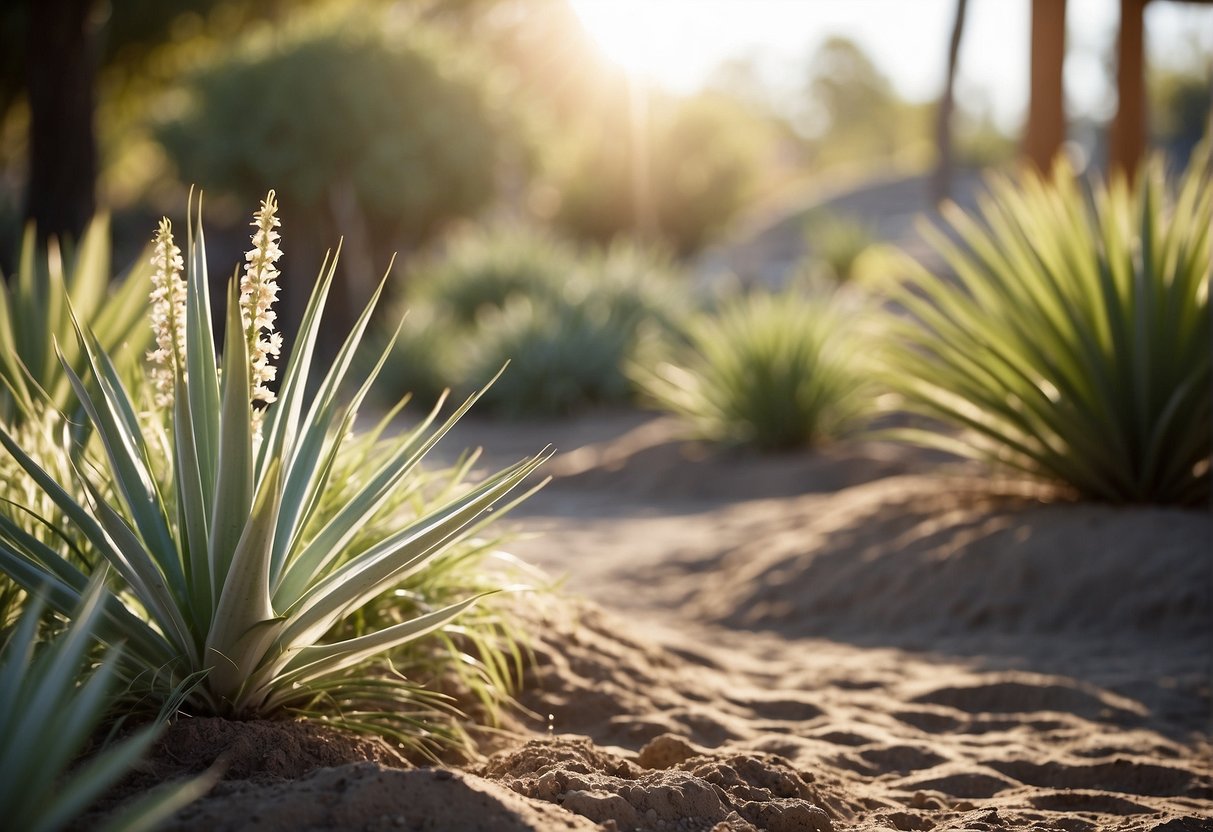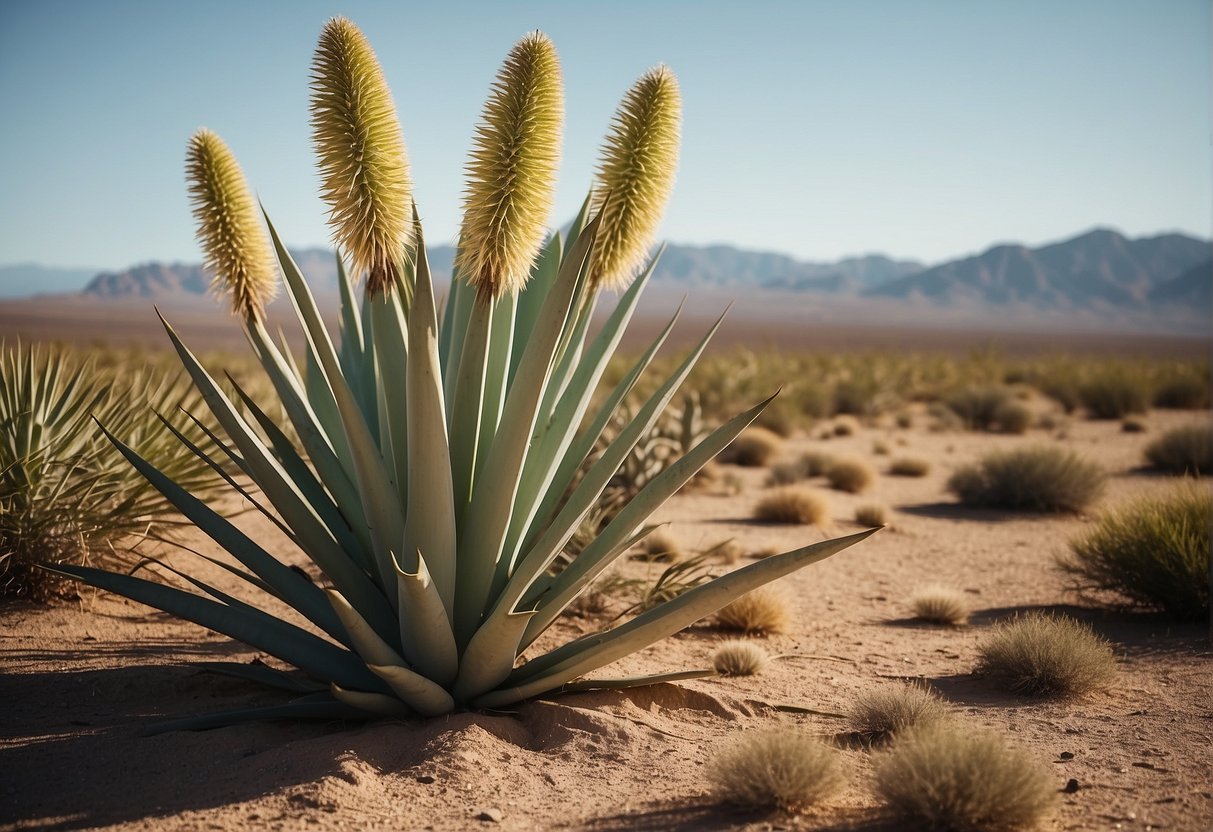Yucca Plants: Which Zone Do They Grow In?
Should you be contemplating the inclusion of yucca plants in your garden or yard, recognizing the appropriate hardiness zone for their growth is crucial. Originating from the warm, dry areas of North and Central America, yucca plants are optimally suited for drought-resistant landscapes. However, it’s worth noting that not every variety of yucca plant is equally resilient, and some might not withstand the colder weather conditions.

Understanding Yucca Plant Hardiness Zones is crucial to ensuring that your plants thrive and survive. The USDA Plant Hardiness Zone Map is a useful tool for determining the appropriate zone for your area. Yucca plants generally grow best in zones 5-10, but some varieties may be able to survive in zones 3 and 4 with proper care and protection. In this article, we’ll explore the different zones in which yucca plants can grow, as well as some tips for cultivating and caring for these unique plants.
Key Takeaways
- Yucca plants are native to hot, arid regions and are well-suited to drought-tolerant landscapes.
- Understanding Yucca Plant Hardiness Zones is crucial to ensuring that your plants thrive and survive.
- Yucca plants generally grow best in zones 5-10, but some varieties may be able to survive in zones 3 and 4 with proper care and protection.
Understanding Yucca Plant Hardiness Zones
Yucca plants are known for their adaptability to various climates and regions. However, understanding the hardiness zones of yucca plants is crucial to ensure their healthy growth and survival. In this section, we will discuss the climate adaptability and regional growth zones of yucca plants.
Climate Adaptability
Yucca plants are known for their ability to grow in a variety of temperatures. However, they thrive in warm to hot temperatures and full sun exposure. Yucca filamentosa and Yucca elephantipes are two common species that can grow in hardiness zones 4 to 11. Joshua trees, on the other hand, can only grow in hardiness zones 8 to 9.
Regional Growth Zones
Yucca plants are native to the Americas, particularly in Mexico, the Great Plains, and the Caribbean. They can grow in a variety of soil types, as long as they are well-draining. Yucca filamentosa is commonly found in the eastern United States, while Yucca elephantipes is native to Central America. Joshua trees, on the other hand, are found in the southwestern United States.
Understanding the regional growth zones of yucca plants is crucial to ensure they are planted in the right environment. Yucca plants are drought-tolerant and can survive in arid regions. However, they may not thrive in regions with excessive moisture or humidity.
In conclusion, yucca plants are hardy and adaptable to various climates and regions. However, it is important to understand their hardiness zones and regional growth requirements to ensure their healthy growth and survival.
Cultivation and Care for Yucca Plants

Yucca plants are hardy, low-maintenance plants that can thrive in a variety of conditions. Proper cultivation and care can help ensure that your yucca plant grows healthy and strong.
Soil and Water Requirements
Yucca plants prefer well-draining soil with a pH between 6.0 and 7.0. Sandy soils work well for yucca plants, as they provide good drainage and prevent root rot. When watering your yucca plant, make sure the soil is completely dry before watering again. Overwatering can lead to root rot and other issues.
Propagation and Planting
Yucca plants can be propagated through seed, cutting, or offsets. Early spring is the best time to plant yucca seeds, while cuttings and offsets can be planted at any time. When planting yucca plants, make sure to choose a container that is large enough to accommodate the plant’s root system. Yucca plants can also be planted directly in the ground, but make sure the soil is well-draining.
Maintenance and Troubleshooting
Yucca plants require minimal maintenance, but pruning can help keep them looking their best. Remove any dead or damaged leaves and trim the plant to your desired shape. Yucca plants can also be susceptible to pests such as aphids and scale. If you notice any pests on your plant, try spraying it with a mixture of water and dish soap. If the problem persists, consider using a pesticide specifically designed for yucca plants.
Overall, yucca plants are easy to care for and can add a unique touch to any garden or home. With the right soil, water, and maintenance, your yucca plant will thrive for years to come.
Frequently Asked Questions

In which USDA hardiness zones can yucca plants thrive?
Yucca plants are typically found in USDA hardiness zones 4 to 9. However, some varieties can tolerate colder temperatures and grow well in zone 3, while others can handle warmer climates and thrive in zone 10.
How cold tolerant are yucca plants, and which varieties are best for cooler climates?
Yucca plants are known for their cold tolerance and can withstand temperatures as low as -20°F. Some of the best varieties for cooler climates include Yucca filamentosa, Yucca glauca, and Yucca baccata.
What are the ideal growing conditions for yucca plants outdoors?
Yucca plants prefer well-draining soil that is slightly acidic to neutral. They also require full sunlight and can tolerate drought conditions. It is important to avoid overwatering and to fertilize sparingly to prevent root rot.
How do yucca plants fare in winter weather, and what care is required?
Yucca plants can survive winter weather as long as they are planted in well-draining soil and provided with adequate protection from frost and snow. Mulching around the base of the plant can also help to insulate the roots and protect them from freezing temperatures.
Can yucca plants withstand freezing temperatures, and if so, to what extent?
Yucca plants can withstand freezing temperatures for short periods of time, but prolonged exposure to extreme cold can damage or kill the plant. It is important to provide adequate protection during winter months, especially in colder climates.
What is the maximum height yucca plants can reach when grown indoors?
Yucca plants can grow up to 10 feet tall when grown indoors, depending on the variety and growing conditions. However, they can also be pruned to maintain a more manageable size.


